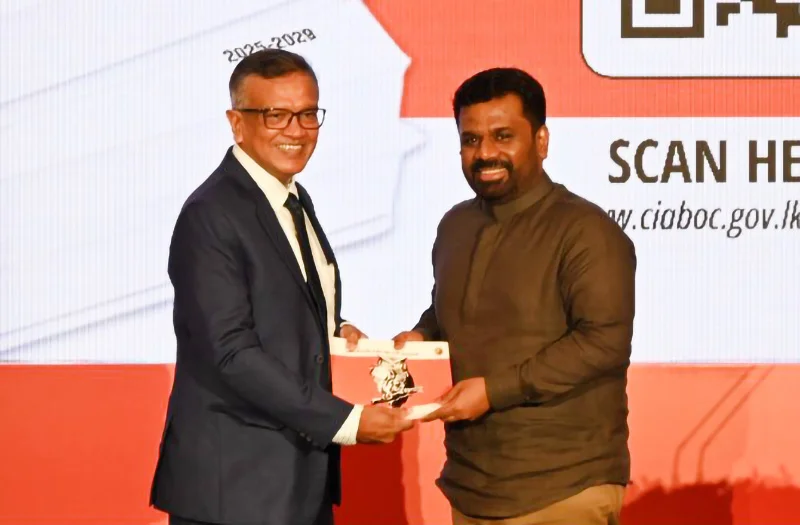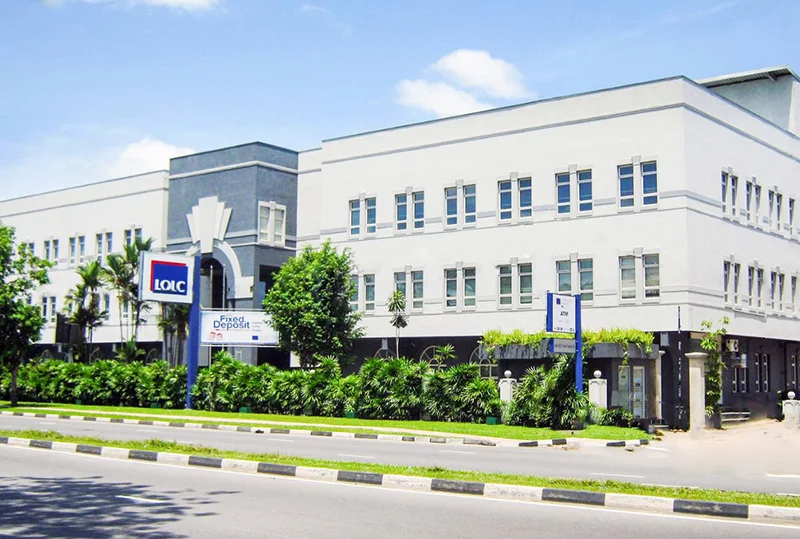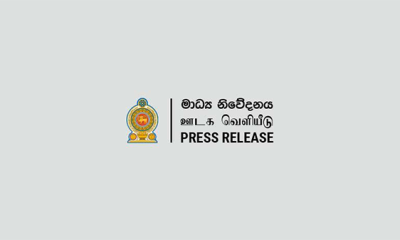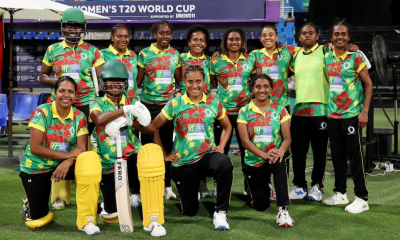Business
Unveiling Trade Potential: An Ex-Ante Analysis of the Sri Lanka – Thailand Free Trade Agreement

New IPS Publication
Sri Lanka and Thailand are engaged in expedited negotiations for a free trade agreement (FTA), aiming to conclude the negotiations by early 2024.Both countries share a strong interest in expanding their trade ties, with Sri Lanka seeking preferential access to Thailand’s market and Thailand keen to tap Sri Lanka as a gateway to South Asia and the Middle East.A new IPS study finds substantial gains in bilateral trade from a comprehensive FTA. It highlights navigating the challenges posed by existing tariff structures, trade imbalances, and domestic political considerations will be crucial to ensuring the FTA’s successful implementation.
Sri Lanka and Thailand are engaged in expedited negotiations for a free trade agreement (FTA) to enhance bilateral trade, facilitate trade activities, and promote investments. The two nations aim to complete the discussion rounds by the beginning of 2024. A new publication by the Institute of Policy Studies of Sri Lanka (IPS) delves into the potential benefits and challenges of this proposed FTA.
The study titled “Unveiling Trade Potential: An Ex-Ante Analysis of the Sri Lanka – Thailand Free Trade Agreement” by IPS Research Fellow Dr Asanka Wijesinghe and IPS Research Officer Nilupulee Rathnayake offers valuable insights into current tariff structures, bound tariffs, binding overhangs, and the development of offensive lists for both nations, to provide crucial insights for policymakers, trade negotiators, and businesses. Using a comprehensive analytical framework, simulations were conducted for 47 Global Trade Analysis Projects (GTAP) sectors, incorporating sector-specific Armington elasticities to enhance the accuracy of the estimates.
The study highlights the structural differences in the economies of Sri Lanka and Thailand, which bring opportunities and pose challenges from a bilateral trade deal. The analysis reveals that both countries have relatively high tariffs in sectors where the other country has a comparative advantage. For example, Thailand imposes significant tariffs on Sri Lanka’s wearing apparel and tea exports, while Sri Lanka maintains high tariffs on Thailand’s vehicle and parts, rubber products, and light electronics exports. Additionally, trade policy uncertainty exists, mainly due to Sri Lanka’s lower binding coverage, resulting in a binding overhang of 33.1% in agricultural exports from Thailand.
The partial equilibrium analysis predicts a substantial 38% increase in Sri Lanka’s exports to Thailand if tariffs are eliminated, with the wearing apparel and tea sectors poised to benefit the most. In contrast, Thailand is expected to experience a 27.8% increase in exports, slightly lower than Sri Lanka’s gains. However, due to the existing trade imbalance favouring Thailand, Sri Lanka’s post-FTA trade deficit is projected to rise by 26%. To ensure the success of the FTA, the authors note that it will be imperative to reduce tariffs on products where both countries have a comparative advantage and address trade policy uncertainties.
Sri Lanka’s offensive list includes 154 products, mainly in manufacturing sectors, such as wearing apparel, tea products, rubber and plastic products, and electric equipment. Thailand’s offensive list comprises 147 products, encompassing rubber products, household electric equipment (e.g., refrigerators, air-conditioners), malt extracts, and vehicles and parts. These lists play a pivotal role in securing an FTA with substantial trade effects, given the significance of the industries they protect domestically.
While the FTA has the potential to generate substantial trade gains through reduced tariffs, the authors highlight the short-term challenge that comes from the widening trade deficit for Sri Lanka with Thailand, in the wake of full tariff liberalisation. To mitigate this risk and maximise the FTA’s benefits, the authors suggest that both countries must negotiate diligently, considering phased tariff reductions with binding commitments and comprehensive trade adjustment programmes. Expanding the coverage of the proposed FTA to investment promotion and trade facilitation is also suggested as such a deep trade agreement will further enhance the benefits.
Access the full report here: https://www.ips.lk/unveiling-trade-potential-an-ex-ante-analysis-of-the-sri-lanka-thailand-free-trade-agreement/
Business
National Anti-Corruption Action Plan launched with focus on economic recovery

In a decisive move to stabilize Sri Lanka’s economy and rebuild investor confidence, the Commission to Investigate Allegations of Bribery and Corruption (CIABOC) yesterday launched the National Anti-Corruption Action Plan (NACAP) 2025–2029, with a clear focus on promoting transparency, accountability and economic governance.
Developed with the support of the United Nations Development Programme (UNDP) and funded by the government of Japan—contributing nearly USD 900,000—the initiative aims to address corruption as a critical economic barrier.
The launch, attended by President Anura Kumara Dissanayake, Chief Justice Murudu Fernando PC, and high-level diplomatic and institutional representatives, signals a shift in Sri Lanka’s economic reform narrative. The NACAP is seen not just as a governance tool but as an economic recovery strategy designed to attract foreign investment, improve public finance management and rebuild public trust.
R.S.A. Dissanayake, Director General of CIABOC, noted that corruption, “is more than a legal issue—it is an economic cancer that stifles innovation, distorts markets and deters foreign direct investment.” The establishment of Internal Affairs Units (IAUs) within government institutions is expected to bring internal oversight to public spending and performance, improving the efficiency of state services.
Japanese ambassador Akio Isomata stressed that eliminating corruption is essential for Sri Lanka to regain global investor confidence. “Transparency and good governance are fundamental pillars for sustainable economic development, he said. “For Sri Lanka to attract foreign investment and achieve long-term growth, the effective implementation of this Action Plan is crucial.”
Echoing this, UNDP Resident Representative Azusa Kubota highlighted the importance of aligning governance with economic goals. “The NACAP is a roadmap for transforming Sri Lanka’s economic governance, she said. “It will make corruption visible, measurable, and actionable.”
The NACAP is built on four strategic pillars—Preventive Measures, Institutional Strengthening & Enforcement, Education, and Law & Policy Reform—targeting nine priority areas. These include streamlining state enterprise management, modernizing financial crimes investigation and integrating anti-corruption education into economic policymaking.
The implementation timeline is designed with a phased approach: short-term stabilization, medium-term reform and long-term transformation—ensuring consistent progress toward a more accountable and economically resilient state.
“Corruption ends here. The responsibility of eradicating bribery and corruption will not be passed on to the next generation — it will be resolved by our government today, President Anura Kumara Dissanayake said.
The President stressed it marks a turning point in Sri Lanka’s history. “With the launch of the National Anti-Corruption Action Plan 2025–2029, we are drawing a bold line in the sand. No longer will the fight against corruption be tangled in politics or postponed for the future. Public officials now have six months to bring transparency and integrity to their institutions. After May, the law will act decisively and without exception. This is not just policy — it’s a promise. A new era of accountability has begun and it begins with us.”
By Ifham Nizam
Business
Verdant Capital doubles down: $13.5m now powering LOLC Africa’s MSME expansion

Verdant Capital invests $4.5M more in LOLC Africa, expanding MSME lending across 10 countries and deepening financial inclusion efforts continent-wide.
Verdant Capital has announced that its Verdant Capital Hybrid Fund (the “Fund”) has completed an additional investment of USD 4.5 million in LOLC Africa Singapore Limited (“LOLC Africa”). This investment brings the total investment in LOLC Africa to USD 13.5 million. This follows the initial investment of USD 9 million in LOLC Africa, completed in June 2023. Both investments are structured as holding company loans, and they are being directed towards LOLC Africa’s operating lending subsidiaries in Zambia, Rwanda, Egypt, Kenya, Tanzania, Nigeria, Malawi, Zimbabwe, Ghana, and the Democratic Republic of Congo.
Founded in 1980 in Sri Lanka, LOLC entered the African continent in 2018. Verdant Capital Hybrid Fund is the first external investor in LOLC Africa’s operations, reflecting the Fund’s catalytic investment approach. These investments are driving the expansion of LOLC Africa’s micro, small and medium enterprises (MSMEs) financing footprint across the continent. Additionally, the Fund’s Technical Assistance Facility (TAF), has offered financial support for LOLC Africa’s Social Ratings and Client Protection Pre-Certifications for its subsidiaries in Zambia and Egypt, with further Technical Assistance initiatives in the pipeline.
Business
HNBA’s advisor & partnership channels drive 26% growth

HNB Assurance PLC (HNBA) delivered another year of outstanding financial performance, securing a 7.5% market share and moving a step closer to achieving its ambitious target of 10% market share by 2026. This success was a result of the company’s well-structured strategies, focused on sustainable growth in an increasingly competitive landscape, which yielded impressive results, with its Gross Written Premium (GWP) growing by 26% compared to the previous year.
Over the past four years, HNBA has maintained an average growth rate of 26%, consistently outperforming the industry. A key element of HNBA’s approach has been prioritizing distinctive, value-driven products over high-volume, lower-margin offerings. This strategy has allowed the company to cater to a broader customer base, ensuring inclusivity while maintaining the competitiveness and relevance of its product portfolio
In terms of growth, HNBA’s proactive investment strategy resulted in an 8% growth in investment income, reaching Rs. 6.9 Bn, while Funds Under Management saw a 26% increase. HNBA paid net benefits and claims totaling Rs. 2.9 Bn. The total assets of the company expanded by 24% to Rs. 53.4 Bn, primarily driven by increased financial investments. Additionally, total Life Insurance contract liabilities grew by 25% to Rs. 38.6 Bn, following a surplus transfer of Rs. 1.3 Bn to shareholders.
-

 Business3 days ago
Business3 days agoColombo Coffee wins coveted management awards
-

 Business5 days ago
Business5 days agoDaraz Sri Lanka ushers in the New Year with 4.4 Avurudu Wasi Pro Max – Sri Lanka’s biggest online Avurudu sale
-

 Features4 days ago
Features4 days agoStarlink in the Global South
-

 Business6 days ago
Business6 days agoStrengthening SDG integration into provincial planning and development process
-

 Business5 days ago
Business5 days agoNew SL Sovereign Bonds win foreign investor confidence
-

 Features1 day ago
Features1 day agoSri Lanka’s Foreign Policy amid Geopolitical Transformations: 1990-2024 – Part III
-

 Features4 days ago
Features4 days agoModi’s Sri Lanka Sojourn
-

 Midweek Review1 day ago
Midweek Review1 day agoInequality is killing the Middle Class























